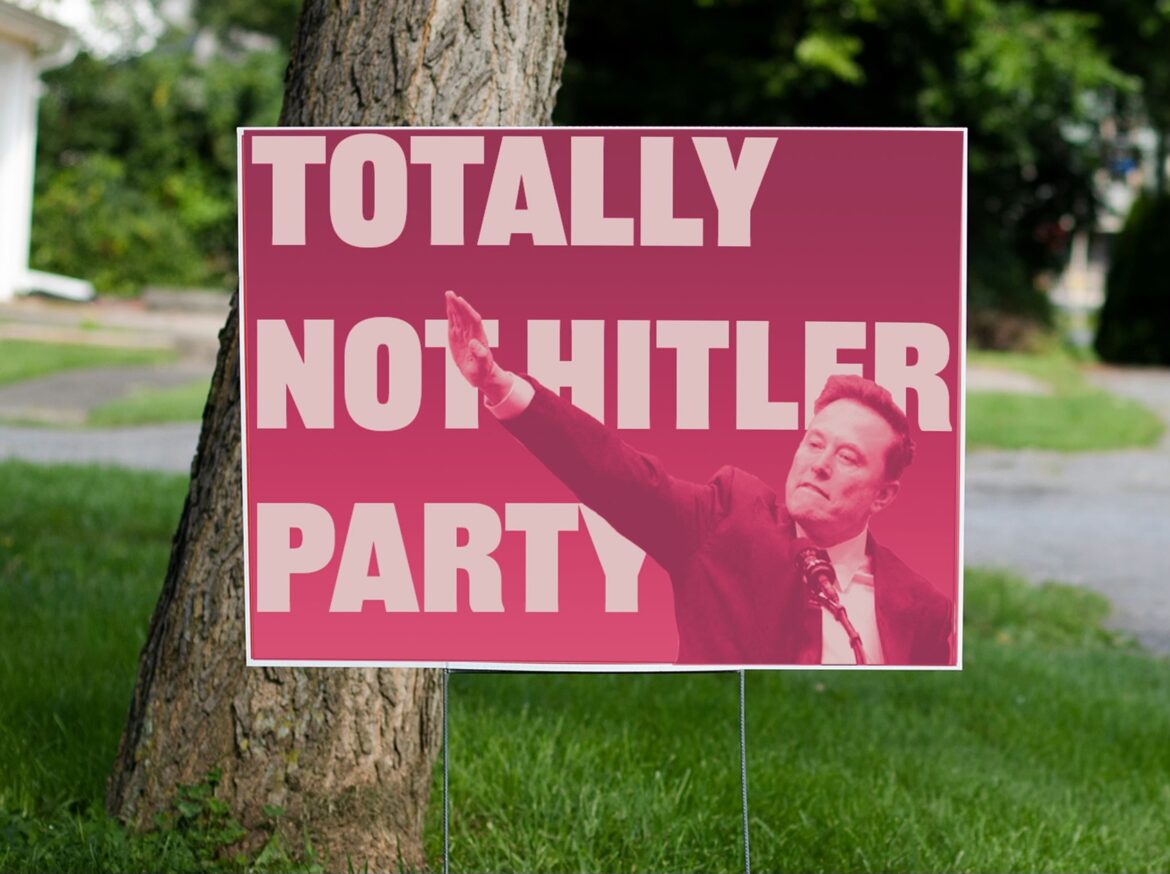Graphic by Ali Jacksi
Far-right parties began to gain influence in Europe after the economic crisis in 2008 and an increase in migrant populations after instability in the Middle East. France’s National Rally saw a surge in popularity after electing Marine Le Pen as their leader, from 10.4% in 2007 to 17.9% in 2012. The Alternative for Germany party then formed in 2013, using anti-immigrant sentiment to fuel their campaigns. In the U.S., President Donald Trump gave this movement a model for legitimacy and power when he won his first presidential election in 2016. His brand of far-right populism spoke to a working class still grappling with the effects of 2008, while bringing anti-immigration legislation and trade protectionism to the forefront. Throughout Europe and the U.S., this brand has spread like wildfire, allowing for other populist parties like Alternative for Germany to comfortably take the second-most seats in government, and far-right movements like the Proud Boys to get tacit approval from the president — telling them to “stand back and stand by.” Centrist parties often build coalitions to stop the far-right from gaining power, a popular strategy that was just used in Germany known as the “firewall.” But far-right parties are gaining in votes and popularity, and are becoming increasingly hard to ignore.
The historical causes for the rise of fascist politics stem from economic strife, lack of information and growing hatred for an “outsider” group from the “native” or natural citizen group. The Nazi Party, for example, rose from a crippled economy. After they gained power, they increased censorship and propaganda to distort reality and found a scapegoat for these issues in the Jewish people. Economic strife worldwide in 2020 allowed for far-right parties to capitalize on voters looking for a way out. These parties often take economic ideas from the left, promoting affordability and an increased standard of living. The far-right party in Denmark, the Danish People’s Party, maintains the platform on their website that maintaining social safety nets is essential, and that the country must ensure safe working environments. Le Pen decried the government’s aid of the 1% and austerity measures at the expense of working people at a May Day rally in 2014. But a key element of fascism is the use of nationalist and isolationist ideas to promote the internal supremacy of their own people.
These ideas often look like anti-immigration legislation, with fascist politicians promoting the idea that migrants are less civilized, promote lawlessness and take jobs from citizens of the country; these parties aim to convince the public that the government cares more about migrants than the native population. The far-right is isolationist in regards to foreign relations, especially with the extended conflict between Ukraine and Russia. They also often hold Islamophobic views, as the migrants they often encounter come from Muslim-majority countries in political turmoil such as Syria or Afghanistan. Geert Wilders, the leader of the far-right Party for Freedom in the Netherlands, likened the Quran to Mein Kampf and proposed a “head rag tax” against women who wear the hijab. These parties become popular as they challenge the status quo, serving as the alternative for centrist parties that maintain control of government.
This is especially true with younger voters. Young voters were long thought to be a stronghold for left-wing parties, especially on climate issues, which put them at the forefront of the fight for their future. However, while facing an affordability crisis due to the lingering effects of COVID-19, an alternative that promises reform for the country and scapegoats migrants becomes increasingly attractive. This population meets all the criteria to create an environment that promotes the far-right, especially with the ease in which new generations can find themselves in information echo chambers. One-third of young voters in France said they rely on TikTok for information on the election campaign of the far-right party, National Rally. This party ranked the highest in popularity among voters aged 18-25, with 32% saying they would vote for the party if the elections were held in the next week after the poll was taken.
This trend has also found its way into American politics. Trump initially gained popularity in large part due to his populist calls to action to working class voters. Like the far-right parties in Europe, he presented a solution to a country that people felt had left them behind in favor of immigrants that take their jobs and promote lawlessness. He promised Americans that he would deport immigrants, impose tariffs on countries that we import goods from and make living in the U.S. more affordable. He’s depended on the far-right, conspiracy theory-promoting echo chambers to gain voters that are scared for their well-being. He’s long demonized media organizations that criticize him, most recently accusing CNN and MSNBC of illegal behavior. Trump has echoed far-right sentiments, saying, “I need the kind of generals that Hitler had,” according to The Atlantic. He too has created the perfect environment to shift the Republican Party to a far-right movement. His recent executive orders have proved Project 2025 to be his blueprint to cripple the administrative and regulatory state along with it.
Young men in the U.S. have followed the European trend towards the right. Predominantly male spaces like sports and gaming are led by influencers that lean towards the right and are open about their views like Dave Portnoy and Adin Ross. An NBA 2K fan may have followed Adin Ross initially for his gaming content, but will inevitably be exposed to his collaborations with Nick Fuentes, a white supremacist, or misogynists like Sneako and Andrew Tate. One of the biggest appeals of the far-right is the obsession with aesthetics of the past and reactionary fringe culture issues over practical solutions and issues that real Americans face. They capitalize on young men that have not yet cemented their identity.
Dave Portnoy founded one of the most popular sports media organizations, Barstool Sports, in 2003, and since has used the site to platform his right-wing views. He publicly supported Trump’s presidential campaign in 2015, writing, “I am voting for Donald Trump. I don’t care if he’s a joke. I don’t care if he’s racist. I don’t care if he’s sexist. I don’t care about any of it. I hope he stays in the race and I hope he wins. Why? Because I love the fact that he is making other politicians squirm. I love the fact he says shit nobody else will say, regardless of how ridiculous it is.”
In the years since that post, Portnoy intertwined his popular media platform for sports news with conservative culture and political incorrectness. Young men that may have just loved sports now have the association that sports culture comes with conservative culture; they’re inevitably exposed to conservatism by engaging with certain hobbies. These right leaning corners of the internet serve as a foray into conservatism — which may then devolve into the alt-right movement.
The far-right only gains legitimacy as traditional parties begin to capitulate on issues they hold. Germany’s center-right Christian Democratic Party passed a resolution for strict immigration laws in January by working with Alternative for Germany, breaching a decadeslong consensus to not work with far-right parties. In the 2024 U.S. presidential elections, the Democratic Party capitulated on the issues of immigration and fracking — two issues long thought to be positions the Democratic Party would oppose Republicans on. But to appeal to more voters in the center, Kamala Harris ran on the platform of a strict border and increased fracking. Instead of the intended effect of leeching Republican voters away from Trump, it gave his platform more legitimacy. People trusted the candidate that long held these opinions over the party that seemingly has just now realized their mistake. Polling from NPR in February shows 49% of Americans believe we need to build a border wall along the Southern border, up from 38% in January 2018. Now, 46% believe we should give legal status to undocumented immigrants brought in as children, down from 65% in 2018.
The left in the U.S. has seemingly nowhere to go. The Democratic Party aims to move further to the center as polls found Kamala Harris to be “too progressive.” The far-right has taken hold of young male voters with right-wing influencers at the forefront of predominantly male spaces. Though the future may seem bleak, far-right parties eventually fall in power and return to the fringes of society. We must remember that the scapegoats the far-right uses are just that: scapegoats. They distract people from the real issues at hand, and while Trump worries about diversity, equity and inclusion funding and pronouns in email signatures, the American people have to contend with eggs costing record high prices. Soon people will realize that they are still struggling after DOGE budget cuts and decreased government spending — in fact, many will find they are struggling even more.
With tariffs imposed and immigrants being deported en masse, the U.S. country is set to face a massive economic crisis — with stock prices already plummeting. The U.S. does not have the infrastructure to create most goods at the rate that other countries do, and losing millions of immigrant workers currently in the labor market would cripple the farming and construction sectors of the economy. Agencies such as the Centers for Disease Control and Prevention and the Food and Drug Administration are necessary not only for human health crises, but for day-to-day consumption. Trump will soon find that fundamentally changing how our economy and government function will be politically toxic, or will face electoral consequences.
The Republican Party does not have a feasible plan for a post-Trump society. The coalition of political incorrectness could only be combined through a populist leader like himself. There is no popular movement in the GOP that could replace the direction that Trump took the party, and once his term is over, his lack of concrete policy in favor of populist calls will leave Republicans fumbling to keep their support.
The American people Trump used for electoral success will likely abandon the party that failed to fulfill its promise for a more affordable country, and the far-right movement will fall as fast as it rose. The American left need to focus less on every transgression of the Constitution he makes, and more on how to act when people wake up.
Left in the dust
On Feb. 6, David Hogg, Vice Chair of the Democratic National Convention, posted a graphic on X, formerly known as Twitter, outlining what Democrats had done that day. They had held the floor for 30 hours to speak out against Russell Vought, who was then the nominee for the director of the Office of Management and Budget. They introduced an act to protect people’s data from Musk and Trump. Nearly 100 House Democrats sent a letter to the Education secretary asking for transparency on the Department of Education’s plans. They delayed the vote for Kash Patel, who was the nominee for the head of the FBI. They investigated why Community Health Centers did not have access to funding after Trump’s freeze.
Both nominees were voted in without a hitch. They do not have the votes for a bill against Trump to pass. Nothing came of the “100 Democrats sending a letter” except a photo-op and a headline when they tried entering the Department of Education building. Despite a court order to stop the freezing of federal funds, the Trump administration has failed to comply. Democrats are scattered and ineffective, unsure of how to contend with a total loss in both houses and the presidency. They lack the momentum and outrage that they had in 2016. In losing the popular vote, they lost the argument that they were the party that the U.S. wanted. It is less a story of this election being stolen by the electoral college and old establishment rules and more one of the people rejecting Democratic rule. Though it is likely the far right’s platform will face drastic electoral consequences in 2026, what will the Democratic Party that people come back to look like?
Ideally, a party that can win. Not the party of former President Joe Biden — of the safe establishment pick that will right the course and knows what’s best after the mess Trump made. Party politics must evolve past the flipping of power as a reaction, and instead elect candidates with policies people actually like. The Democrats need to return to their roots as the working class party. But two challenges stand in the way of this ideal: feasibility and messaging.
After Democrats lost the election, the New York Times released a story documenting the loss of a voter base that used to be a Democratic stronghold: working class Americans. In an effort to reorient the American economy towards more international trade in a post Cold War world, our country engaged in more trade with China. This bolstered the total American economy through increased production and cheap labor that American companies could export. It made goods cheaper, which should have been better for the working class in theory. But as the Times puts it, “Democratic policies focused on people as consumers instead of as workers.” The exported labor meant a sharp decrease in blue-collar work, with the number of people in manufacturing dropping from 17.6 million in 1998 to 11.5 million in 2010. Trump was able to capitalize on the fear that jobs were being taken away and the strain these people felt in the long recovery from the 2008 financial crisis. He won in 2016 due to his ability to effectively speak to the working class.
Biden took cues from this in his own presidency. It may not have been why he won — at least not compared to the allures of name recognition and normalcy. But during his time as president, he understood the importance of domestic production, and reoriented Democratic policies to ensure the working class was well represented. Biden kept many of the tariffs against China that Trump had enacted, nominated Lina Khan to fight against corporate monopolies and many of the bills he passed were to bolster American infrastructure and blue-collar work. He was the first president to walk a picket line and sided with union leaders against a Japanese company attempting to take over U.S. Steel. In an attempt to avoid the tepid and drawn out response to an economic crisis that the Obama administration had attempted, Biden spent trillions to hasten the recovery.
It’s more than feasible to orient policy towards the working class. And yet, this massive demographic still overwhelmingly voted for Trump. A candidate’s economic record as president can be perfect on paper, but if people are still suffering, they will lose elections. Some analysts say people who voted for Trump did so due to the economy, but for many people, “the economy” is less about policy and more about a feeling of material well-being. Implementing policies that are aimed at helping working-class Americans is important, but what wins elections is the messaging attached. Much of the feelings of prosperity that people felt under Trump were due to the aftereffects of the recovery from the Obama administration. What was more important was his messaging — his catering to the working class that was left behind.
When the dust settles, Trump’s messaging about taking America back and being the party for the economy will backfire when the working class is still hurting. When Democrats pick up the pieces, their policies still need that working-class orientation, but their messaging needs to follow. People are hungry for a leader that speaks up and is willing to help. It’s not luck that helped Sen. Bernie Sanders pack thousands of people into a room to “fight oligarchy” hundreds of miles away from his home state of Vermont. It’s not a coincidence that multiple town halls in Republican districts erupted into outcry. People are ready to fight. They need a party that’s ready to fight for them.




Comments are closed.